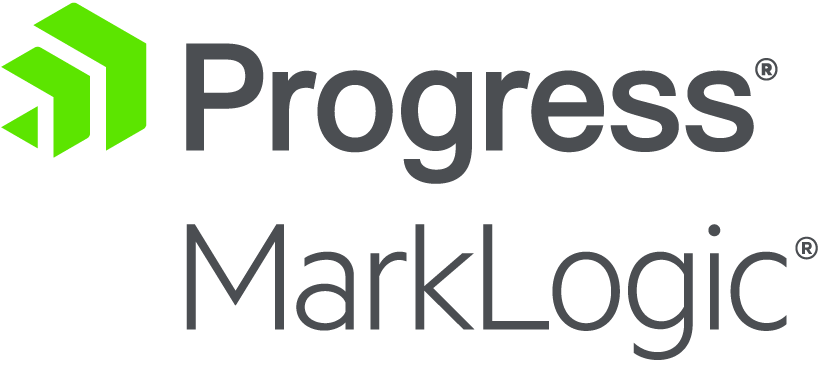Business
Winning Hearts and Minds: Strategies for Team Buy-In on Data Projects
- 22 November, 2024
- By Dave Cassel

When it comes to Big Data initiatives, selecting the right tools, platforms, and architectures is important. Often overlooked is the importance of getting your team on board with the project and the approach. Gaining buy-in across business units is critical to the success of any data project. Without it, even the best technologies can fail to deliver meaningful results.
4V Services has seen the impact of buy-in—or a lack of buy-in—and how that affects project outcomes. In this post, we'll identify the key stakeholders you need to engage, provide actionable strategies to build consensus and enthusiasm for your data project, and look at the impact of this important step.
Why Team Buy-In Is Critical
Data projects often affect multiple parts of an organization, impacting business decision-making and day-to-day workflows. While the technical and financial aspects of a project are vital, its ultimate success depends on how well it integrates into the organization’s culture and processes.
Here’s why buy-in matters:
- Smooth Implementation: When stakeholders are pulling in the same direction, it’s easier to address roadblocks and adapt to challenges.
- Faster Adoption: Teams that feel involved are more likely to embrace the new tools or processes.
- Better Insights: Input from end users ensures the project aligns with real-world needs, leading to more actionable insights.
Without buy-in, projects may face resistance, limited adoption, or even outright failure, wasting both time and resources.
Key Stakeholders in a Data Project
To achieve comprehensive buy-in, you need to engage all relevant stakeholders. These typically fall into four main groups:
1. Business Leaders
- Why They Matter: They set organizational priorities and approve budgets. Their support can make or break the project.
- What They Care About: ROI, alignment with business strategy, and competitive advantage.
- What We've Seen: We worked on a project that lacked buy-in from upper management. When the project ran into some challenges, an executive started making significant changes. These led to higher overall costs and delays in completing the project. A different client had solid buy-in from all stakeholders. When the original project champion left the company, the broad base of support allowed the project to move forward without a hitch.
2. Finance Teams
- Why They Matter: They control the purse strings and evaluate the financial feasibility of the project.
- What They Care About: Cost-effectiveness, long-term value, and measurable results.
- What We've Seen: Small projects might be able to happen under the radar, but impactful projects will have some costs. These may include software licenses, infrastructure, and outside help. Working with finance teams to align the approach with the organization's financial plan helps get them on board. Surprises about costs, on the other hand, raise red flags.
3. Technology Teams (IT and Data Specialists)
- Why They Matter: They are responsible for implementing and maintaining the project.
- What They Care About: Compatibility with existing systems, scalability, and technical feasibility.
- What We've Seen: There are many approaches for data projects with new options becoming available all the time. Mastering new skills takes time. If the team sees that the approach being taken will be productive and they are given the time to come up to speed with new tools, they will be less likely to push back and want to revert to what they've done before. They need to feel confident in their ability not only to build the project, but to maintain it for the long term.
4. End Users
- Why They Matter: They interact directly with the tools and processes, and their participation determines adoption success.
- What They Care About: Usability, how it impacts their workflow, and training/support availability.
- What We've Seen: I worked on a project that had leadership, budget, and the technical team aligned. We built a solid system with lots of data and interesting reports. Unfortunately, this was a "build it and they will come" project -- but they didn't. Better engagement early on could have produced better alignment with user needs.
Strategies to Build Team Buy-In
To create excitement and alignment around your data project, focus on involving stakeholders at every stage. Below are strategies tailored to each group:
1. Involve Stakeholders Early
- What to Do: Begin discussions with stakeholders before making key decisions. This includes business leaders, tech teams, and end users.
- Why It Works: Early involvement helps identify concerns, align goals, and create a sense of ownership. If part of the benefit of the project is to reduce manual work, consider what that means for the people who are doing that work today. Ideally it means they can focus on higher-value, more rewarding efforts. Make sure that is communicated clearly.
2. Develop a Clear Business Case
- What to Do: Create a compelling narrative that connects the project to organizational goals. Use metrics to emphasize the potential ROI and benefits.
- Why It Works: A strong business case appeals to both business leaders and finance teams by tying the initiative to measurable success. When a project is tied to a compelling business need, it's easier for all parties to grasp the value of seeing it through.
3. Create Prototypes or Pilot Projects
- What to Do: Implement a small-scale version of the project or a specific feature for testing. Involve end users in the process.
- Why It Works: Prototypes demonstrate value and practicality, giving stakeholders a chance to see the project in action and provide feedback. This also gives an opportunity for course correction if needs have changed. Involving end users creates anticipation as people see that the project will help them with their jobs.
4. Focus on Communication and Transparency
- What to Do: Regularly update the various stakeholders on progress, challenges, and milestones. Use clear, non-technical language to ensure everyone understands.
- Why It Works: Transparent communication builds trust and keeps everyone aligned toward the project’s goals.
5. Provide Training and Support
- What to Do: Offer tailored training sessions and resources to help end users understand the new tools and processes. Provide ongoing support to address concerns. Solicit feedback from end users -- and act on it where practical.
- Why It Works: Empowering end users with knowledge reduces resistance and encourages adoption. Improving based on user feedback conveys responsiveness and a desire for the user community to be successful.
6. Celebrate Successes
- What to Do: Acknowledge milestones and celebrate small wins throughout the project. Recognize team members who contribute to success.
- Why It Works: Celebrating progress boosts morale and reinforces the value of the project. Hitting milestones helps business leaders and the finance team see that their investment is paying off.
Overcoming Common Challenges
Despite best efforts, resistance can arise. Here’s how to address common issues:
- Stakeholder Apathy: Provide regular updates -- or better yet: demos -- to stakeholders to show concrete progress. Emphasize the personal and organizational benefits of the project. Discuss the impact of the project not moving forward. Sometimes the right answer is that the cost exceeds the benefits. Being realistic about this early in the process builds trust.
- Technical Concerns: Run proof-of-concept sub-projects to address the concern. This might include ability to perform at scale, pace of development, security, or other concerns. Be laser focused on addressing the concern. Ensure you have the necessary expertise to give the approach a fair evaluation.
- End User Resistance: Conduct workshops and listen to concerns. Highlight how the project will make their work easier and more efficient. Consider whether the resistance comes from not addressing an important need (figure this out early!), usability, performance, or job concerns.
The Bottom Line
Winning hearts and minds is an essential part of any Big Data initiative. These projects are often at the heart of an organization's processes with potential for big impact. By involving stakeholders early, communicating effectively, and demonstrating the project's value, you can build the support needed to ensure success.
Remember, technology may be the backbone of your project, but people are the heart. Investing time and effort into gaining team buy-in will pay dividends in smoother implementation, faster adoption, and better results.
Call to Action: Ready to start your data journey? Contact 4V Services to learn how our expertise can help you navigate the technical and human challenges of Big Data transformation.
Share this post:
4V Services works with development teams to boost their knowledge and capabilities. Contact us today to talk about how we can help you succeed!







When it comes to Big Data initiatives, selecting the right tools, platforms, and architectures is important. Often overlooked is the...